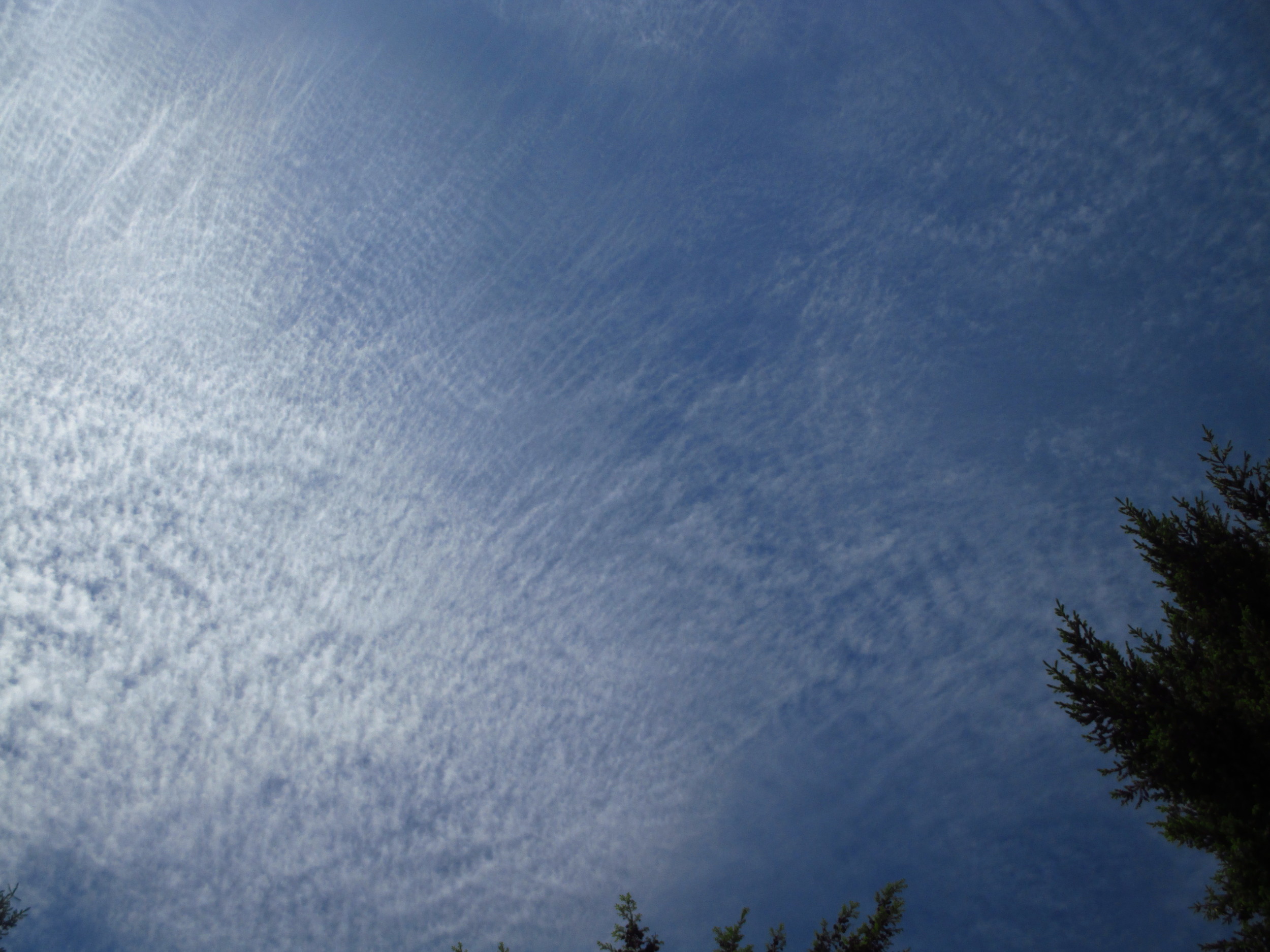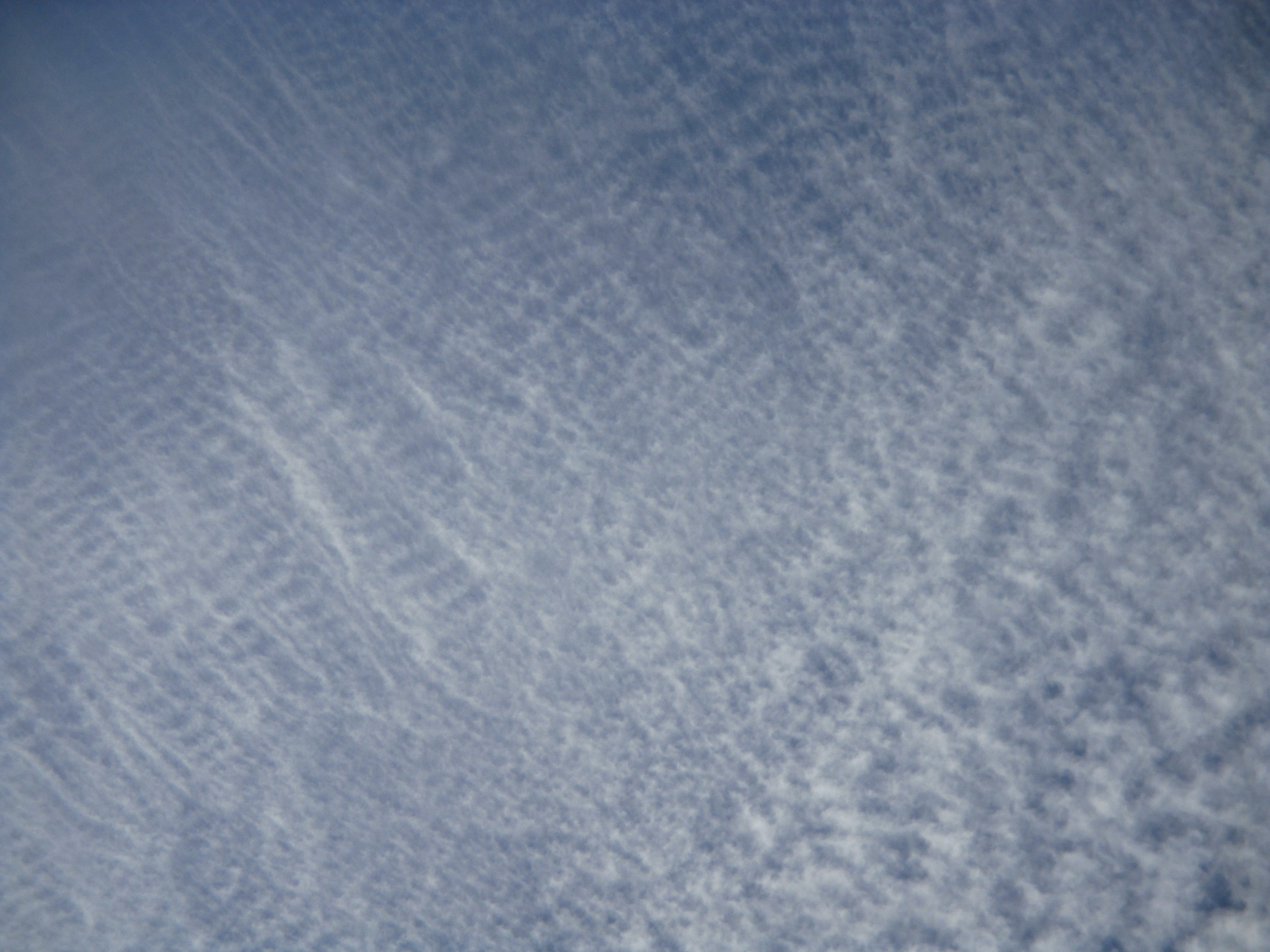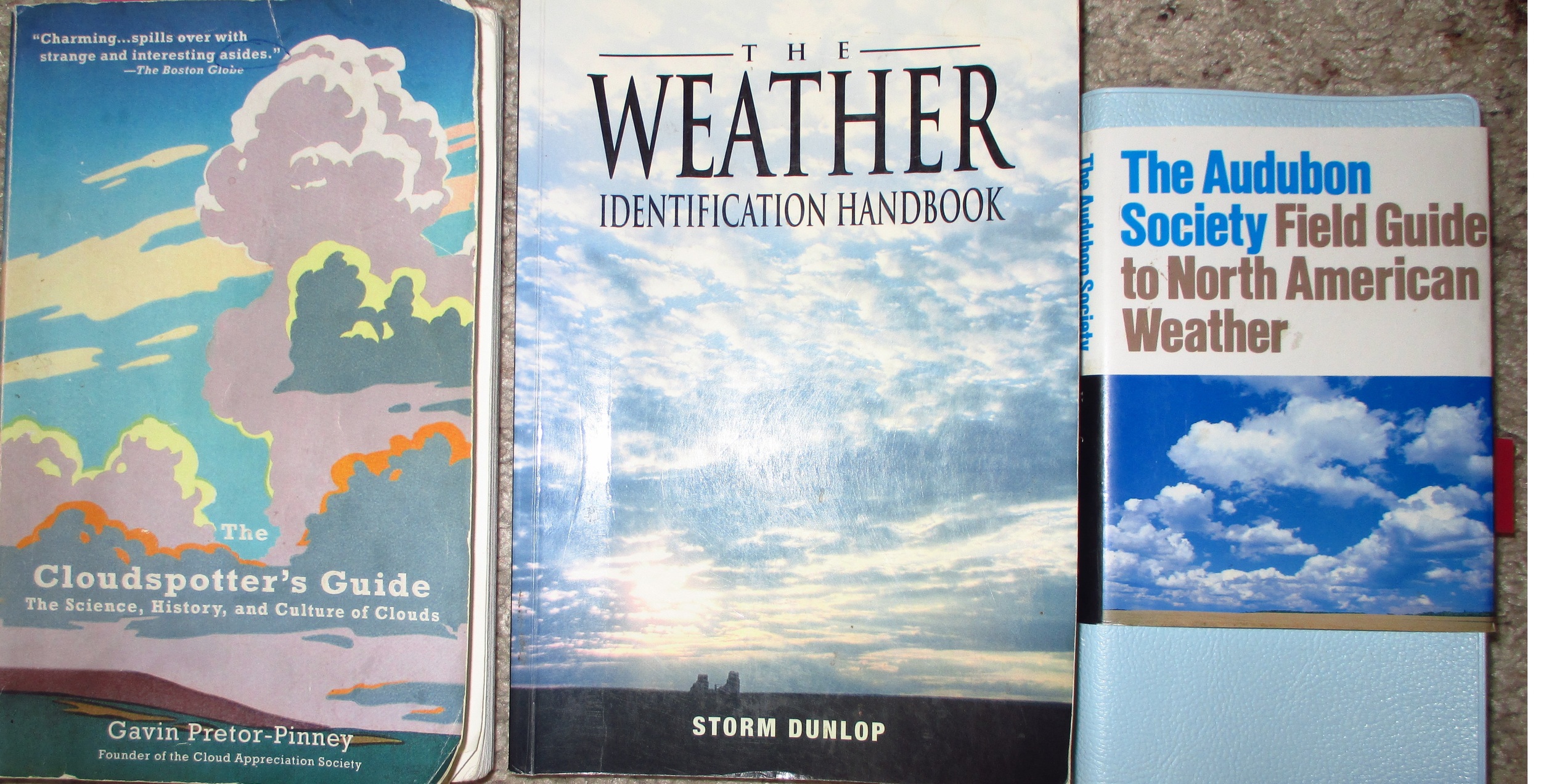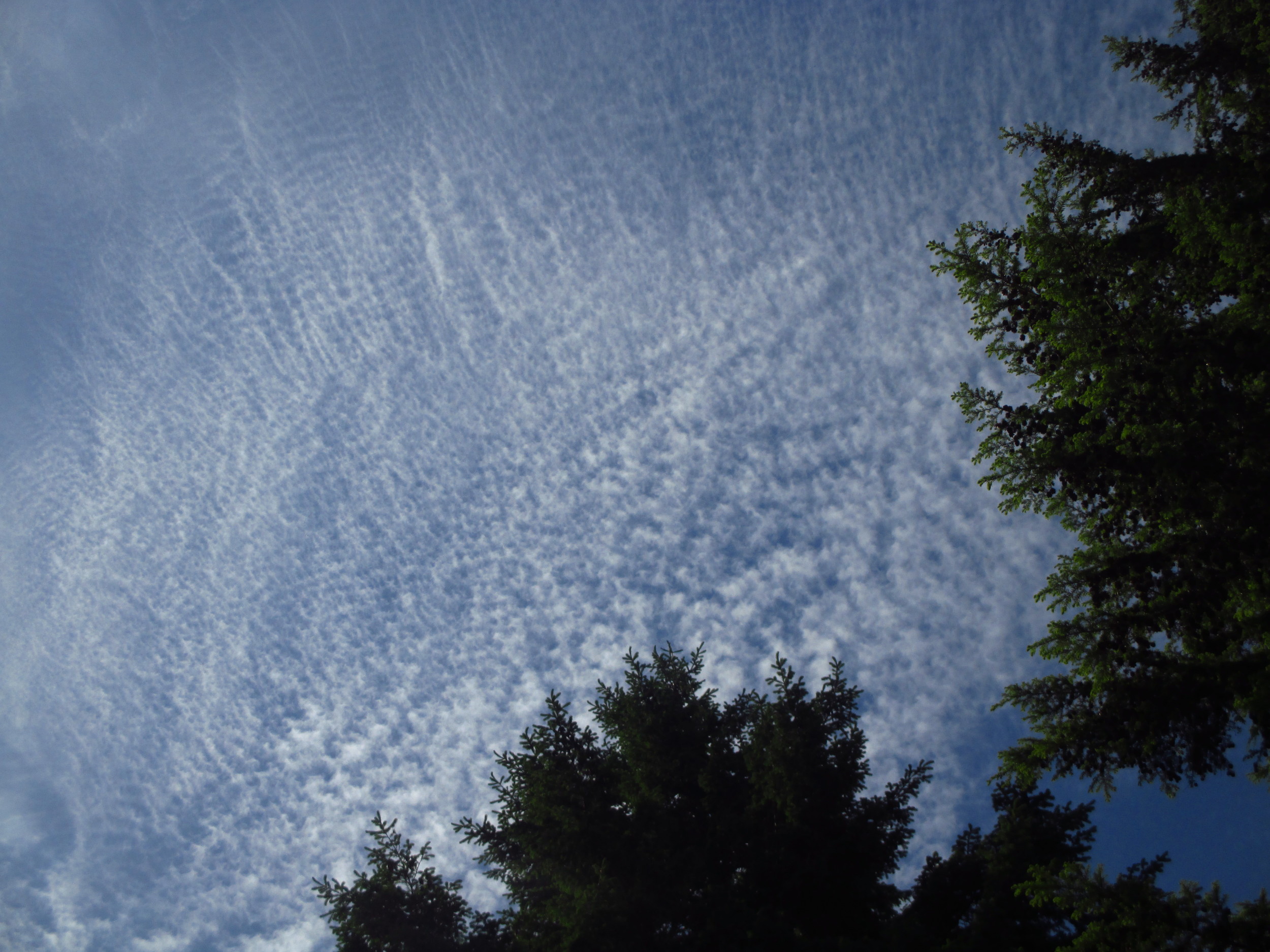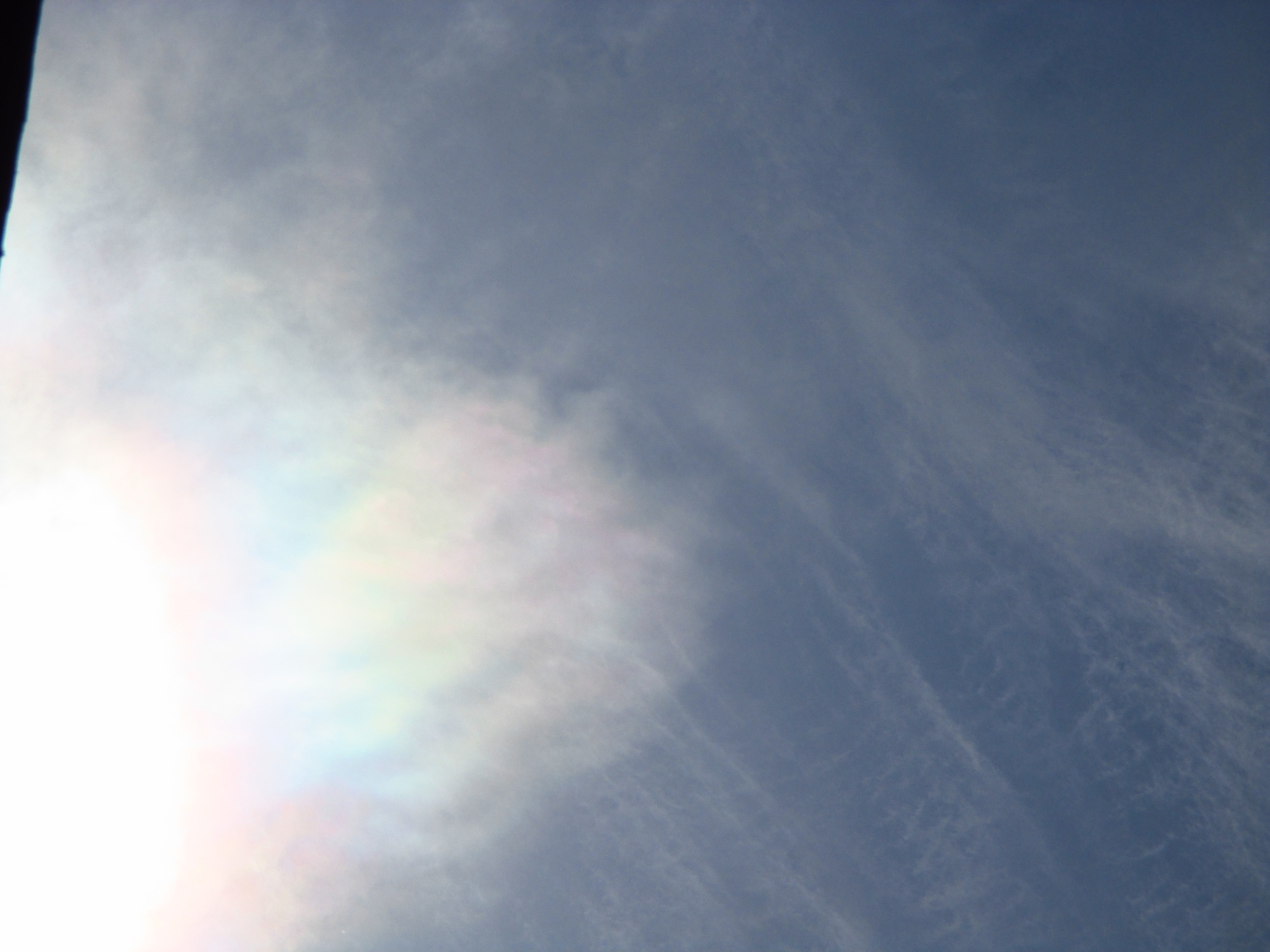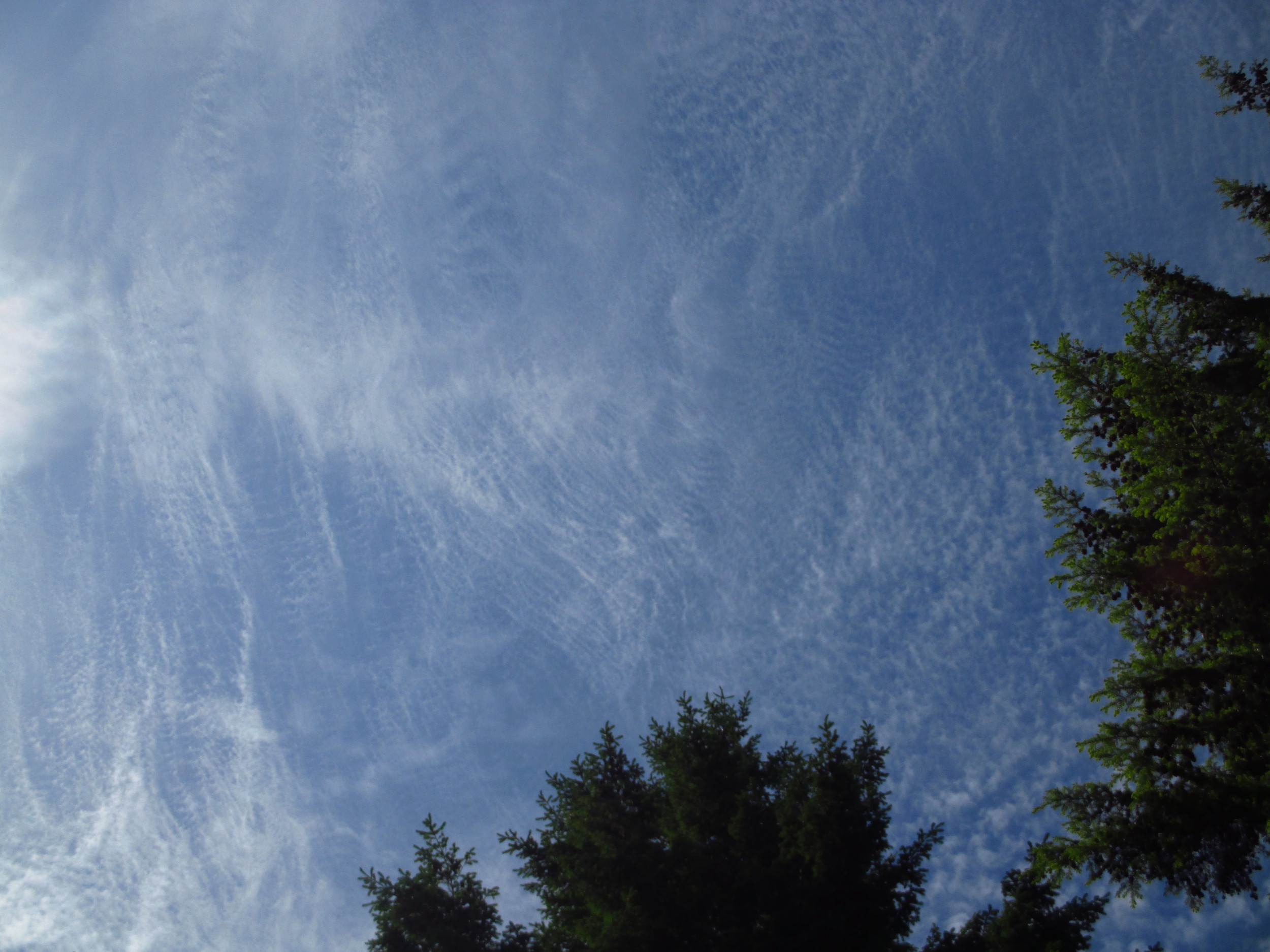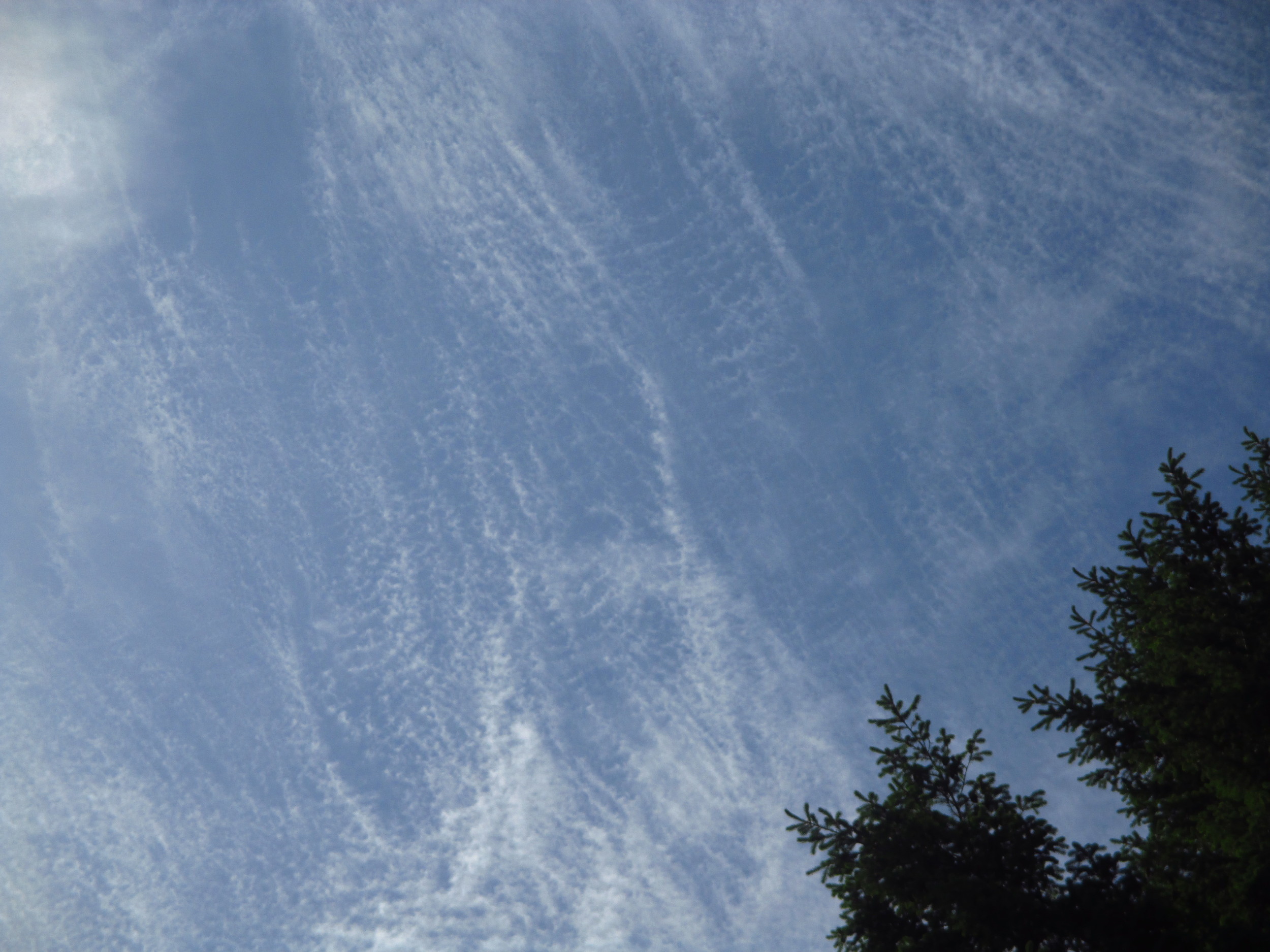Sunday's clouds were spectacular. I hope you were looking up in the afternoon when these delicate cirrocumulus clouds appeared. They are high clouds--16,500 to 45,000 above the earth--and are composed entirely of ice crystals. These particular cirrocumulus clouds are known as cirriocumulus stratiformis. If you've had a smattering of Latin, you know that strata means layer and formis means form. So, these clouds take the form of a layer--an extensive layer in this case, and not a patch.
The photo above is one of several I took and posted here (as a slide show, tap image to advance). If you look carefully on the right side of the photographs you'll see lacey little holes, almost like a honeycomb or lattice pattern. This feature is described as "lacunosus" meaning a pit, gap, missing space or part (aka holes). This feature is rare and doesn't last long when it does appear.
These lovely cirrocumulus stratiformis arrived after a long spell of foggy mornings (stratus clouds) and hot, sunny days. Weatherwise, they indicate a change--usually rain in 9-196 hours (!) as the my "Guide to the Sky" poster tells me. Wouldn't you know it, it was raining Monday morning. While I was sleeping, a steady progression of clouds moved across the sky--likely the typical sequence from high cirrocumulus to mid-level altostratus and then to low nimbostratus, the rain clouds.
In the photo slide show posted here are two photographs--not of clouds--but of my four favorite go-to resources for identifying clouds. First, I consult my big "Guide to the Sky" poster pinned next to my cloud-viewing window. Then I go my Cloudspotter's Guide, the Weather Identification Handbook, and then the Audubon Society Field Guide to North American Weather. Yes, I need all four. The latter two are more about clouds than weather and have excellent photographs of all the cloud types and myriad forms.
There is no Field Guide to the Clouds. There should be, but since the cloud's field marks are constantly changing, I cannot imagine anyone would undertake such a a book--when would you stop taking photographs? This is not the book I am writing on clouds. Though my book will help you learn how to identify them. When I get it finished. When I can stop looking up and get to work.

